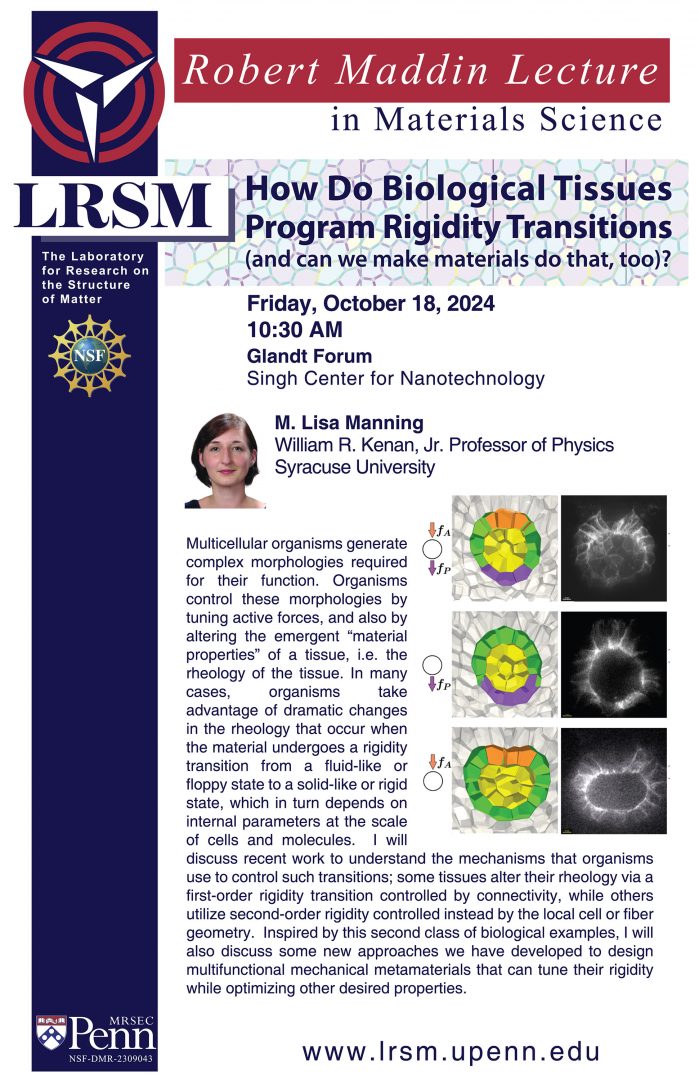 How Do Biological Tissues Program Rigidity Transitions (and can we make materials do that, too)?
How Do Biological Tissues Program Rigidity Transitions (and can we make materials do that, too)?
Friday, October 18, 2024
10:30 am
The Glandt Forum
Krishna P. Singh Center for Nanotechnology
3205 Walnut Street
Philadelphia, PA 19104
download the poster
video
Abstract:
Multicellular organisms generate complex morphologies required for their function. Organisms control these morphologies by tuning active forces, and also by altering the emergent “material properties” of a tissue, i.e. the rheology of the tissue. In many cases, organisms take advantage of dramatic changes in the rheology that occur when the material undergoes a rigidity transition from a fluid-like or floppy state to a solid-like or rigid state, which in turn depends on internal parameters at the scale of cells and molecules. I will discuss recent work to understand the mechanisms that organisms use to control such transitions; some tissues alter their rheology via a first-order rigidity transition controlled by connectivity, while others utilize second-order rigidity controlled instead by the local cell or fiber geometry. Inspired by this second class of biological examples, I will also discuss some new approaches we have developed to design multifunctional mechanical metamaterials that can tune their rigidity while optimizing other desired properties.

